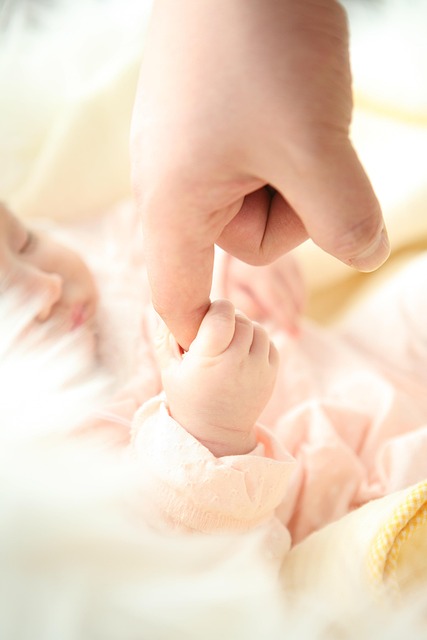On a snowy Saturday morning, I welcomed my daughter into the world. We were discharged from the hospital that Monday, and like many new mothers in the United States, my husband returned to work the very next day, leaving me to navigate the challenges of caring for our newborn daughter along with our two and four-year-old sons. Just three days after giving birth, I struggled to step out of the car onto the icy pavement at my doctor’s office. My body ached, and the weight of the baby’s car seat pressed heavily on my already fatigued frame. I hesitated, unsure if I could make the 25-yard trek from the parking lot to the entrance. The hospital had advised me against lifting heavy objects for weeks, and I found myself chuckling at the irony of my situation.
My labor had been induced due to high blood pressure and pre-eclampsia, which persisted even after my daughter was born. Concerned, my doctor instructed me to return for a follow-up a few days later. As I arrived, my toddler dashed from the car, his energy a stark contrast to my exhaustion from the mere six hours of sleep I had managed over the past three days. My heart raced as I called out to him, trying to keep pace in the parking lot, my body feeling like a heavy weight.
Naturally, my blood pressure remained elevated, leading the nurse to schedule yet another visit in two days. Discussions about bed rest, medication, and the possibility of not being able to breastfeed my newborn filled the room. Sensing my distress, the nurse urged me to rest more. I couldn’t help but laugh again as I lifted my weary toddler onto one hip and balanced the baby carrier on the other side, dragging my exhausted self out of the exam room to avoid collapsing.
In that difficult moment, I felt frustration toward my husband for leaving, irritation toward my doctors for insisting on follow-ups so soon, and anger at my own body for not performing as I needed it to. Yet, as I nursed my crying infant while observing my son’s curious antics, I reflected on the stark differences in postpartum care between the United States and other developed nations.
When people learn that my first son was born in the United Kingdom, they often ask how the experiences compare. While there were some differences in labor and delivery, the most significant disparities lay in postpartum care.
The UK’s National Health Service provides comprehensive support to everyone, including mothers like me on student visas. Fathers and domestic partners in the UK are entitled to at least two weeks of paid paternity leave, allowing them to bond with their newborns and support their partners during recovery. Moreover, had my daughter been born in the UK, I wouldn’t have had to brave the cold weather and risk my own recovery to check my blood pressure. After my son was born, a team of local midwives visited our home for two weeks to provide checkups, eliminating the need for multiple trips to a clinic.
I didn’t have to schedule appointments with a pediatrician for every little concern; I could call the midwives any time for advice or assistance. When I struggled with breastfeeding, a lactation consultant arrived at my home the next day, providing hands-on support without me ever needing to leave the house.
After two weeks, my husband returned to work, but my support system remained in place. My son was assigned a health visitor, a specially trained nurse who monitored his well-being for the next five years. Initially, she visited several times a week, gradually reducing her visits while remaining accessible via phone or text. When I panicked about my son’s breastfeeding resistance at six months, she arrived within two hours to reassure me and check on him. This support is crucial, as research shows that new mothers with adequate postpartum assistance are less likely to face physical and mental health challenges, including postpartum depression.
The stress of managing everything alone can overwhelm new mothers. When my daughter was born in the U.S., the burden of caring for three young children, maintaining our home, and managing appointments drained my energy, leaving me in a state of constant stress. As I sat in the waiting room of my ob-gyn’s office, surrounded by expectant mothers, I felt a wave of despair. Many of them would soon face the pressure of returning to work after just six weeks, risking their jobs or battling the isolation and exhaustion that could lead to postpartum depression.
How can we consider ourselves a civilized nation if we fail to adequately support mothers after childbirth? The U.S. must align with the practices of other developed countries, recognizing that promoting the health and happiness of families begins with providing mothers the time and resources they need for proper recovery post-delivery.
For more insights into navigating the journey of parenthood, check out our post on home insemination kits. Understanding the dynamics of parental support, whether through professional resources or community connections, is essential for a healthy family environment. For guidance on fertility and insemination, refer to this resource on intrauterine insemination, which provides authoritative information on the subject. Additionally, if you’re exploring your options, you might find our post on couples’ fertility journeys to be particularly helpful.
In summary, the U.S. must improve its postpartum care system to better support new mothers, ensuring they have access to the resources and time they need for recovery. This change is essential for the health and well-being of both mothers and their children.
Keyphrase: postpartum health care in the U.S.
Tags: [“home insemination kit”, “home insemination syringe”, “self insemination”]
